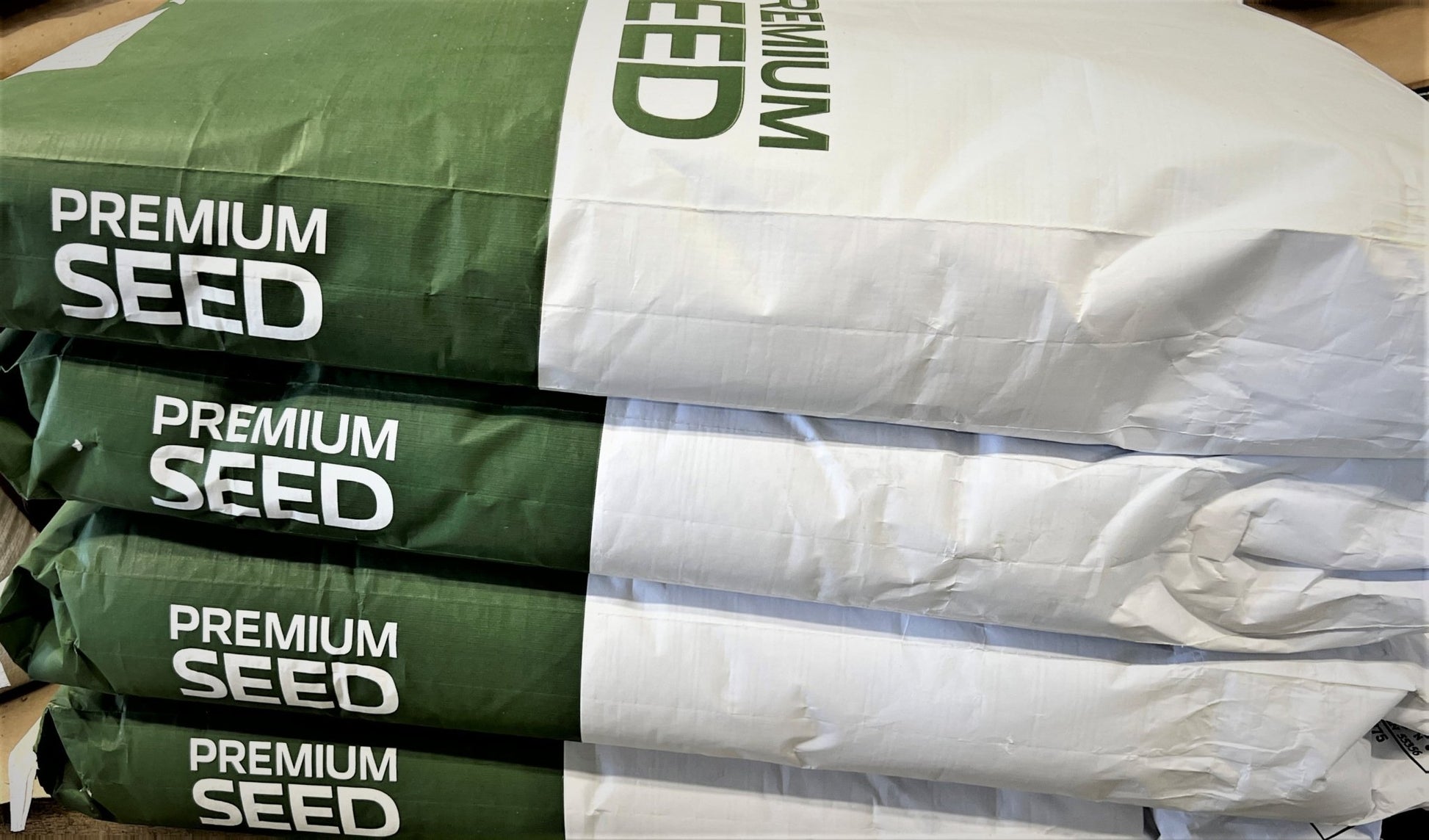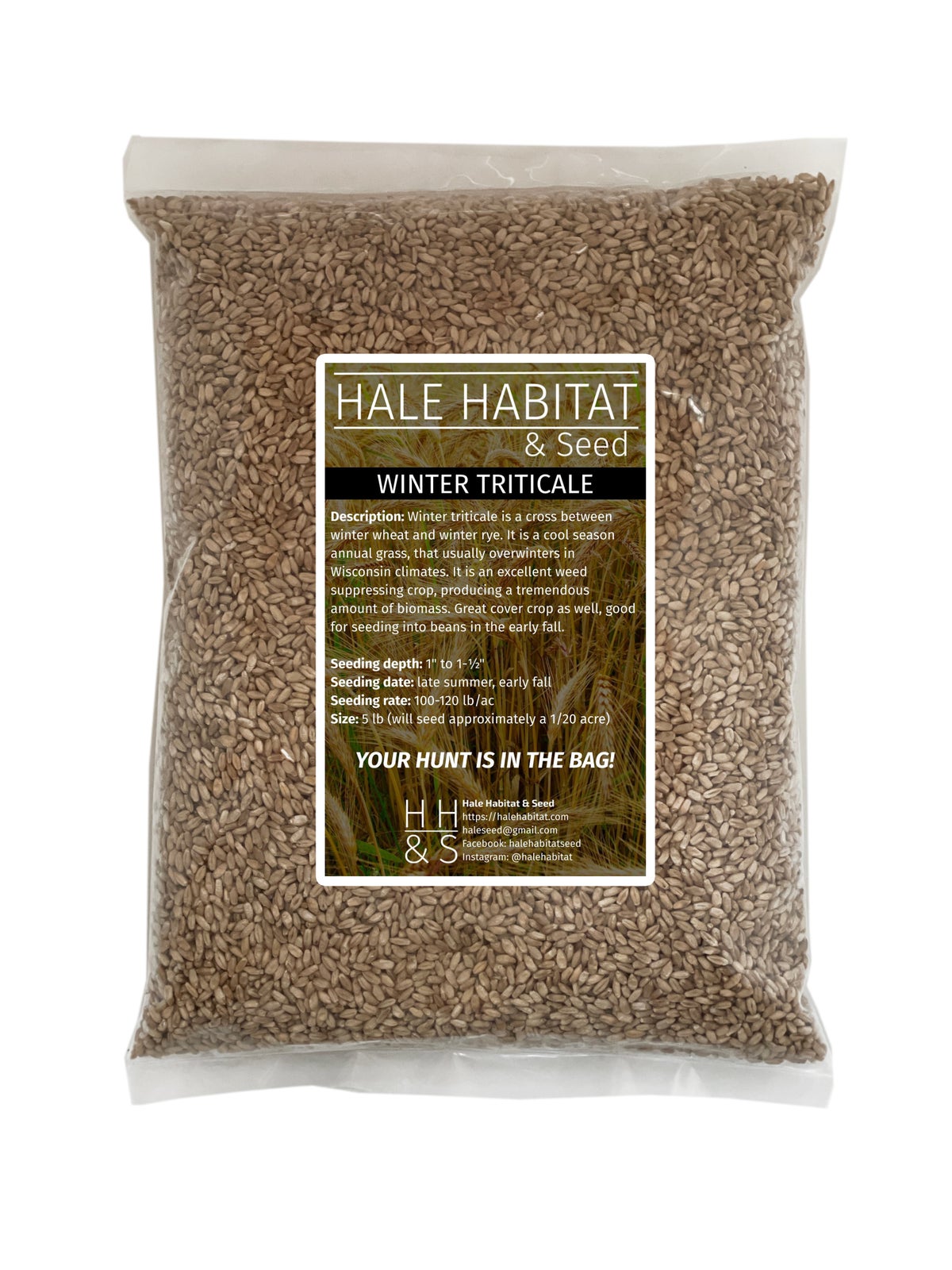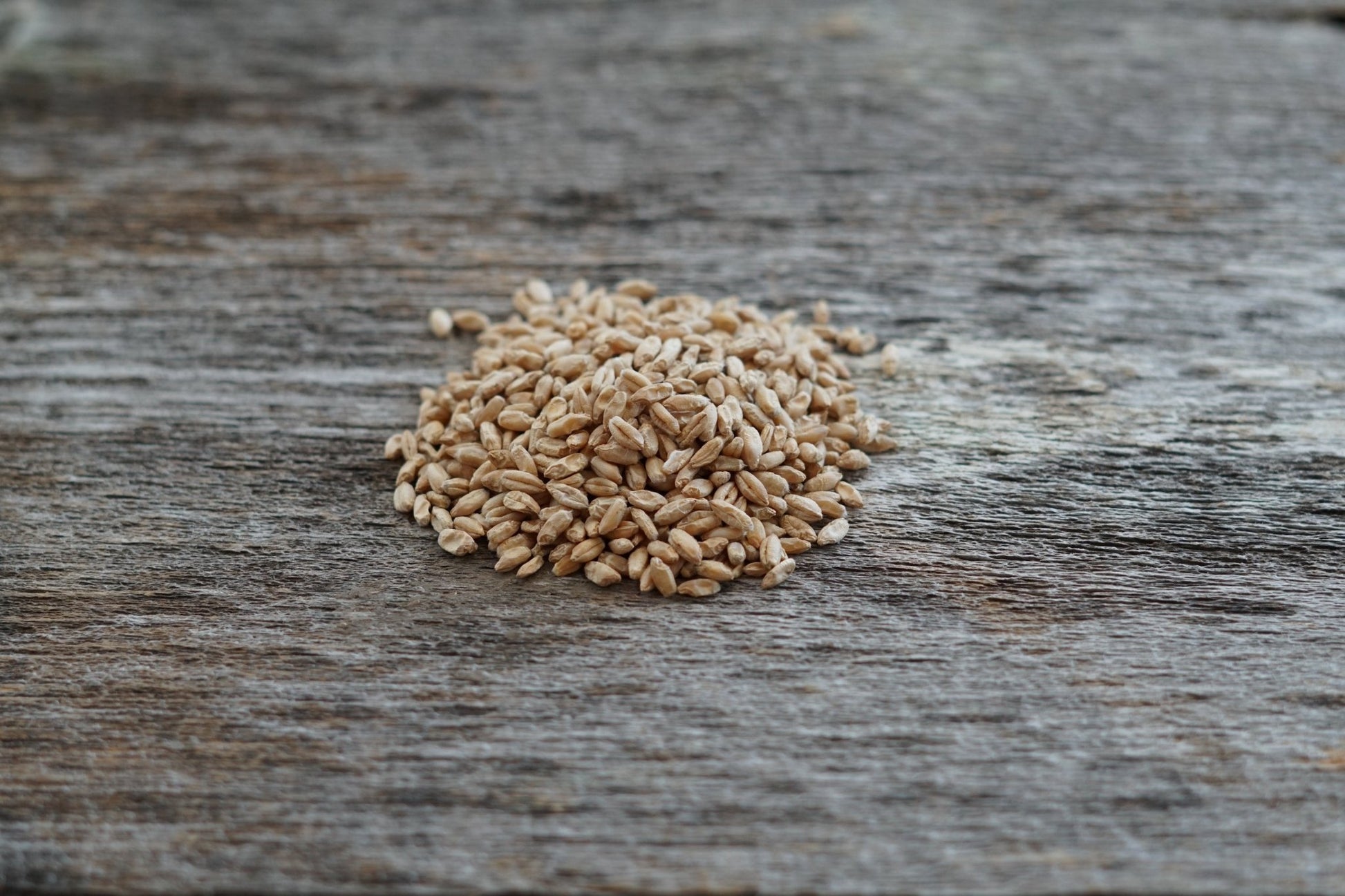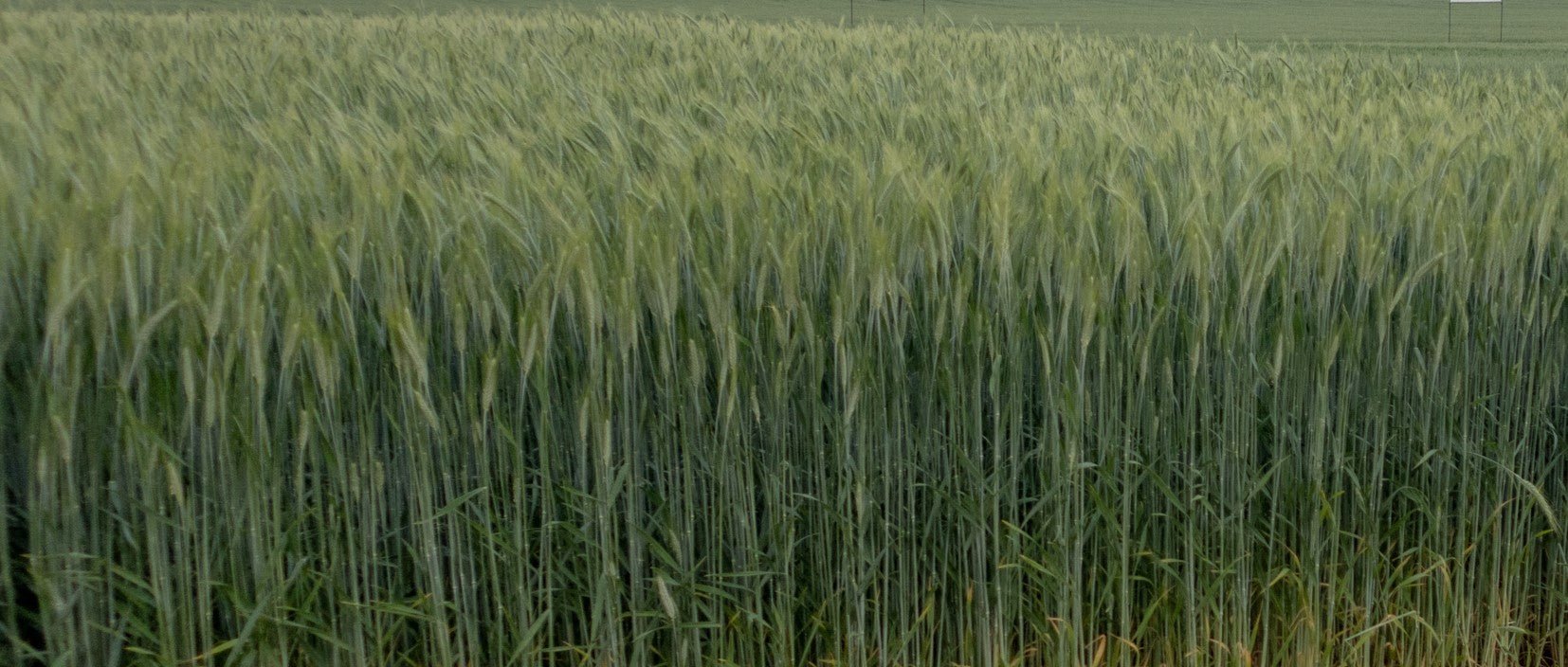Hale Habitat & Seed
Winter Triticale
Winter Triticale
FREE SHIPPING!
Couldn't load pickup availability
Winter Triticale is a hybrid cereal grain derived from crossing wheat (Triticum) and rye (Secale). It combines the high yield and grain quality of wheat with the hardiness and stress tolerance of rye. It is widely used as a forage crop, cover crop, and wildlife food source, providing high nutritional value for deer, turkeys, and other wildlife species.
Key Characteristics of Winter Triticale
-
Planting Time:
-
Fall planting (late September to early November in most regions) to allow for establishment before winter dormancy.
-
-
Planting Depth:
-
1 to 1.5 inches for optimal germination and establishment.
-
-
Planting Rates:
-
Broadcast: 90-120 lbs per acre.
-
Drilling: 60-90 lbs per acre.
-
-
Days to Maturity:
-
90-120 days in spring, depending on variety and growing conditions.
-
-
Height at Maturity:
-
3-5 feet tall, depending on variety and growing conditions.
-
-
Drought Tolerance:
-
Moderate to high; more drought-tolerant than wheat but less than rye.
-
-
Saturated Soil Tolerance:
-
Moderate; can tolerate short periods of wet soil but may suffer in prolonged waterlogged conditions.
-
-
Shade Tolerance:
-
Low; prefers full sun for optimal growth.
-
Fertilization Guidelines
-
Nitrogen (N):
-
Apply 50-100 lbs per acre at planting, with an additional 30-50 lbs per acre in early spring for forage or grain production.
-
-
Phosphorus (P) and Potassium (K):
-
Apply based on soil test recommendations. Typical rates range from 30-60 lbs per acre for P and K.
-
-
pH Range:
-
Prefers a soil pH of 5.5-7.5 for optimal growth.
-
Herbicide Use
-
Winter Triticale is relatively competitive against weeds, but herbicide use may be necessary in high-weed-pressure situations.
-
Pre-Emergent Herbicides:
-
Use products labeled for wheat or rye, such as pendimethalin, to control annual grasses and broadleaf weeds.
-
-
Post-Emergent Herbicides:
-
2,4-D or dicamba can be used for broadleaf weed control. Always follow label instructions and ensure the herbicide is safe for triticale.
-
-
Caution: Avoid herbicides that may harm wildlife if the crop is intended as a food source.
Share
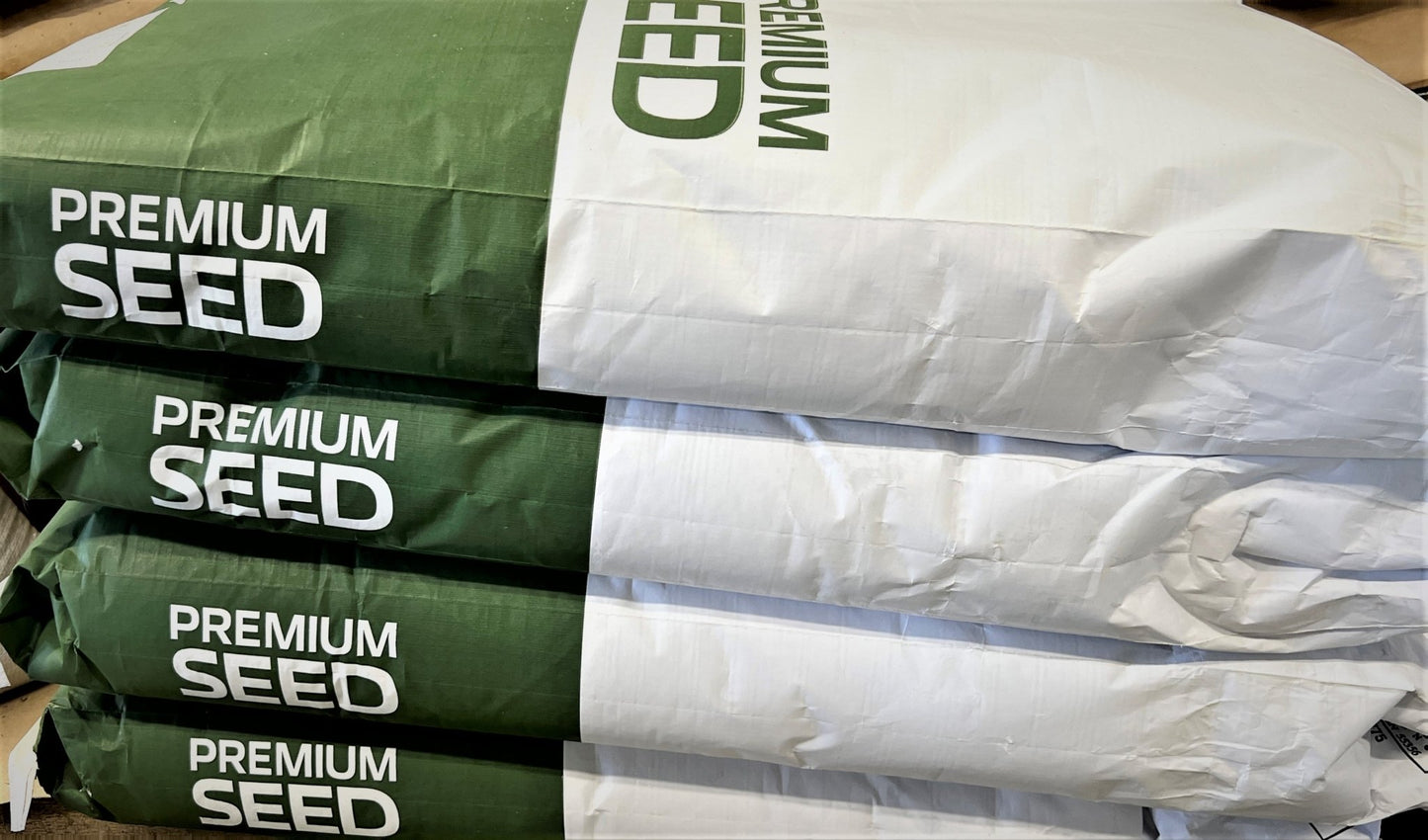
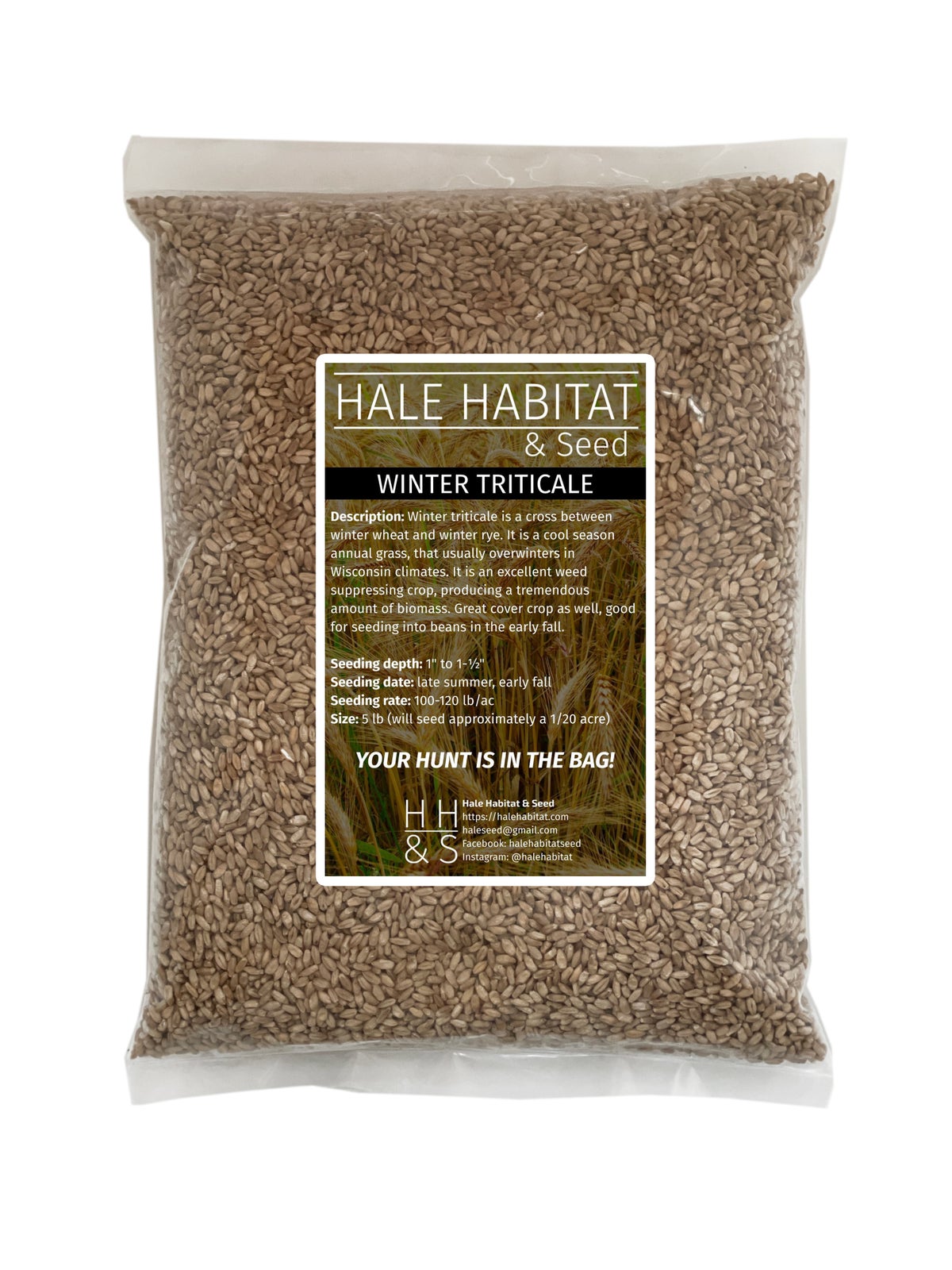
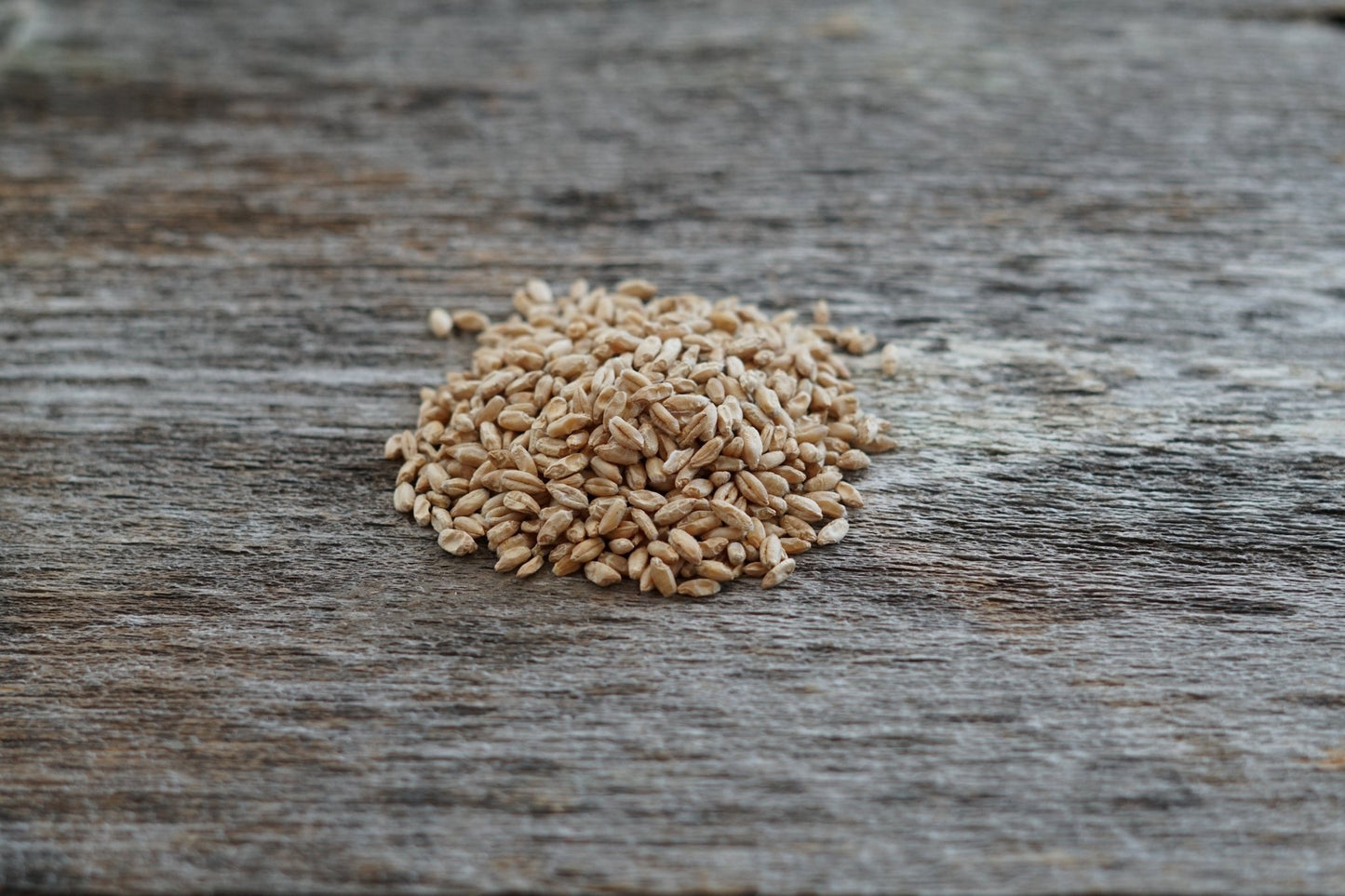
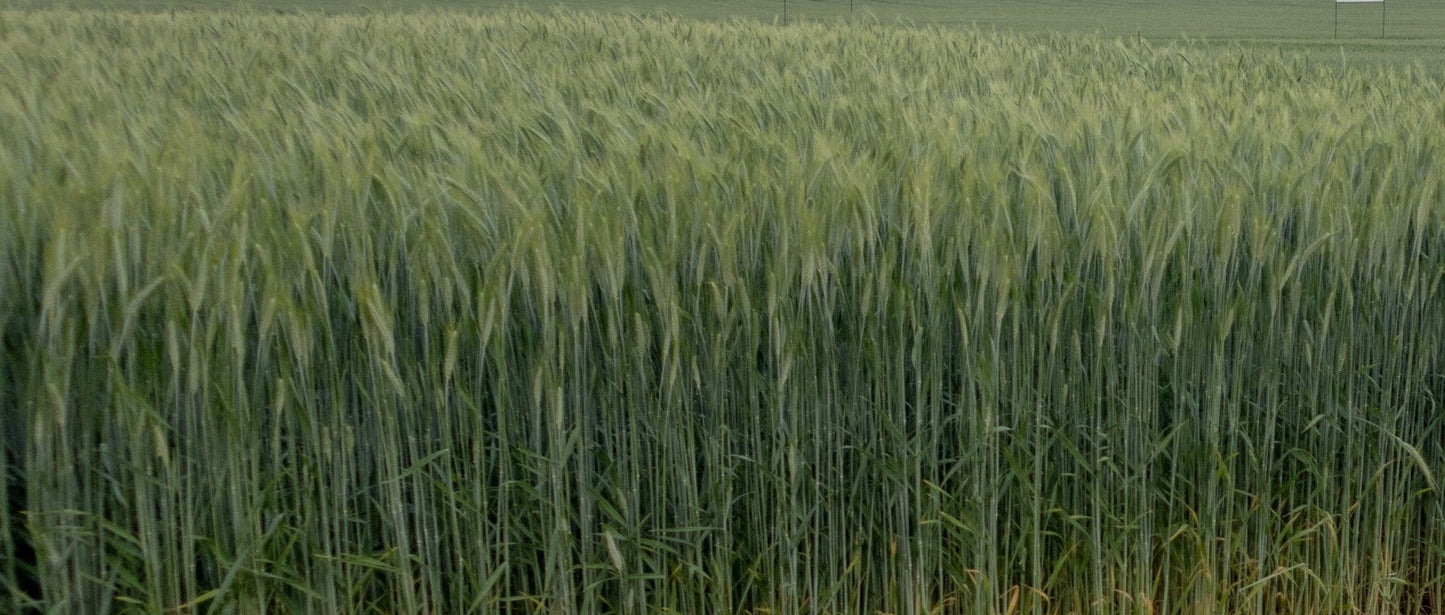
I planted it it sprouted in a couple weeks and is still growing under the snow what the deer didn’t eat anyway but that’s what it good for !

